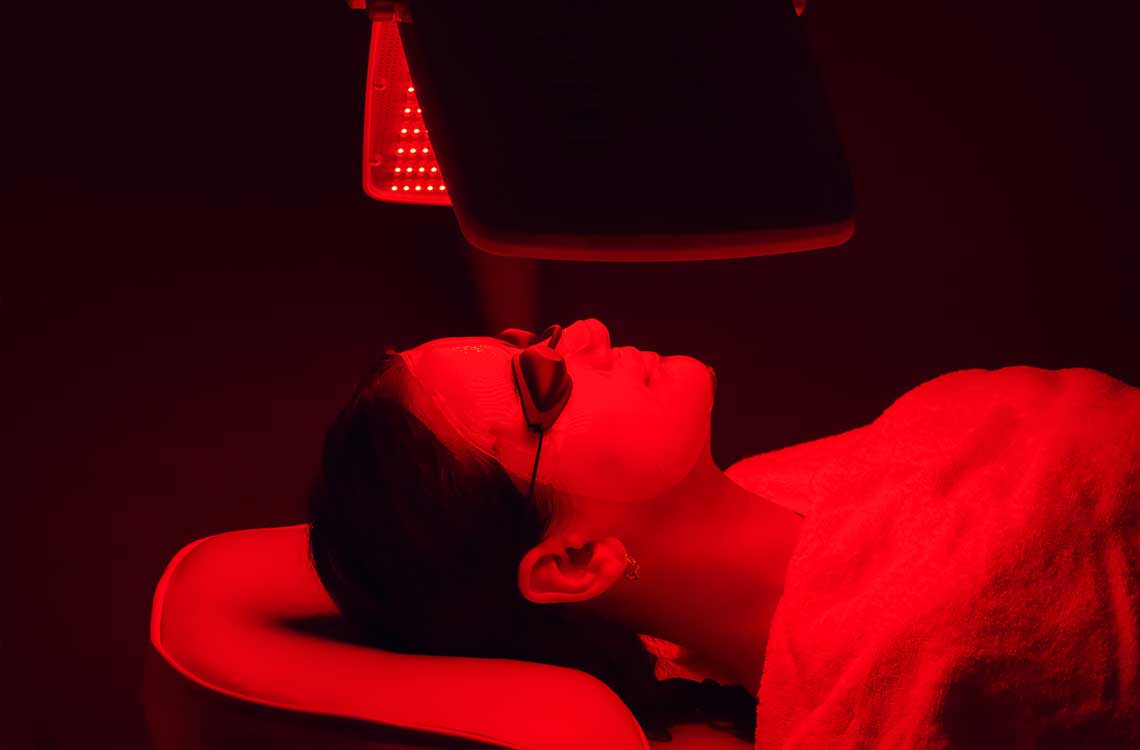By Dr. Christopher Lepisto
a 5-min read
A patient in her 60s came into my office earlier this year, asking if LED (Light Emitting Diode) phototherapy works. I had been working with her skin and other health issues for several years with some improvement, and she had been receiving LED treatments from a chiropractor. She was unsure if it was helping her skin condition. She would enter an inevitable cycle of flares during which her skin would worsen, was frustrated and looking for answers.
LED therapy is an increasingly popular treatment for various skin conditions, usually given in a clinician’s office such as a dermatologist or skin aesthetician. It is an easy fit into skin-deep, appearance driven culture. Why do all the difficulty of changing your diet, lifestyle and overall health when the latest and greatest paid-to-beautify therapies are just an appointment away? The devices have been around since the 1960s, but do they work?
LED therapy has advantages over ultraviolet (UV) tanning beds which are known to increase the risk of basal cell and squamous cell carcinomas of the skin when used in excess. While the overall safety of LED therapy is clearly demonstrated, there are risks. As Harvard Medical School notes in an Oct 2019 article,
“One brand, Neutrogena, recalled its Light Therapy Acne Mask in July in response to concerns about the device’s potential to damage the eyes in people with underlying eye conditions or those who are taking medication that makes the eyes more sensitive to light.” As the article further notes, if someone chooses to undergo LED therapy without a diagnosis, they may not know if it is actually skin cancer or another condition that may not be improved by the device.
As for efficacy, the evidence is growing that LED therapy actually does provide benefit. One trial of 136 volunteers showed an increase of patient satisfaction, reduction of fine lines, wrinkles, skin roughness and an increase in intradermal collagen density. More importantly, a meta-analysis from Feb 2018 demonstrated improvement in wound healing, moderate acne vulgaris, psoriasis and both basal and squamous cell carcinomas. However, I ultimately believe the LED therapy was providing no benefit for my patient as it was not treating the unique issues causing her skin problem. So what exactly was going on with her that this phototherapy could not help?
One of the primary underlying principles of naturopathic medicine is to “identify and treat the cause” of the disease process. Known as Tolle Causam in Latin, it is very relevant in skin conditions because of the large number of factors that contribute to skin health. The state of the gut (digestion, microflora, integrity), the level of stress, the amount of toxin accumulation, the history of sun exposure, the nutritional intake through diet and supplements, the use of medications, the amount of sugar, caffeine and alcohol intake are some of the considerations relevant to one’s skin health. In her case, no amount of cleaning up her diet, reducing her sun exposure, topical/internal use of herbs and supplements or LED therapy was enough to counter the overwhelming amount of stress in the rest of her life. The principle of “removing obstacles to cure” became the central need to her skin health.
LED therapy may be a perfectly legitimate consideration for your skin health. Just like my patient, I will help you decide what treatments you really need. If you need a guide towards optimal vitality, give me a call today. I’d love to get you on track to better health, naturally.
Dr. Lepisto

